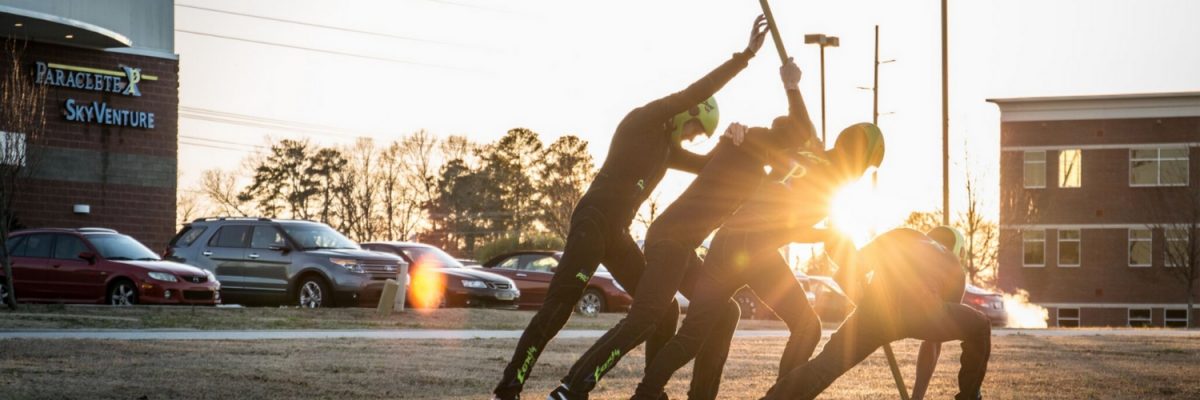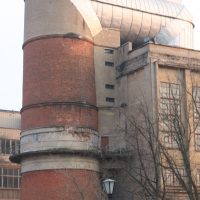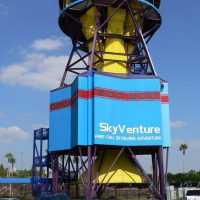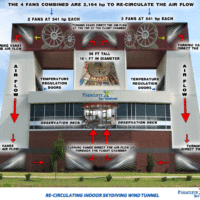
A History of The Indoor Skydiving Revolution
Monday, March 27, 2017
- Team XP
- 3/27/17
- 0
- Indoor Skydiving
What Started the Indoor Skydiving Revolution
It may have taken half a century for the wind tunnel to catch on, but WOW–when it eventually did, it caught on like wildfire. Here at Paraclete XP–America’s largest, most respected indoor skydiving facility–we have a long history to salute and to thank for our current success. So: without further ado, here’s a brief history behind the indoor skydiving revolution.
The First Vertical Wind Tunnel

The first vertical wind tunnel was built for the military. It went up in 1940 at Langley, and it was intended for military scientists to test theories and designs that just wouldn’t work in horizontal conditions. The Langley tunnel was dead slow, by modern standards, with wind too weak to support a human flier. That said: it was the first step in the ladder up to the worldwide bodyflight revolution.
The Evolution of Wind Tunnels
If the first wind tunnel was built for war, the second was built for love. In the late 1970s, Québécois inventor Jean St-Germain* built an indoor wind chamber for his kids. The building, with the words ‘Aerodium’ inscribed in hippie bubble script on its brick façade, was the first vertical wind tunnel designed to be used for humans to fly in. The chamber had a big propellor underneath the chamber–pulled from a DC-3 aircraft–and padded walls. The pads were utterly necessary. The wind generated by the propellor didn’t reach from wall to wall, so it was easy to slip off the supporting central column of strongest air and plummet into the bumpers.
It had its issues, but–luckily–St-Germain’s kids weren’t the only folks to cotton to the Aerodium idea. An entrepreneur from the Appalachian hootenanny town of Pigeon Forge, Tennessee bought the design from St-Germain. So did Marvin Krattner, who had owned the Boston Celtics and was looking to invest in a novelty experience center in Las Vegas. (Side note: Krattner was clever enough to buy the franchising rights.) The two new wind tunnels opened almost concurrently in the 1980s, though the Tennessee location was slowed down by a construction fire.
Changes In Wind Tunnel Technology
Technology held steady for a while. The big-scary-propellor-directly-under-the-flyers design was the done thing for about a decade. It’s not hard to understand why, as these designs had the benefit of being potentially mobile and relatively inexpensive to construct. As the 1990s started to unfurl, however, these designs proved too weak-winded to support the other physical orientations that were being pursued in the burgeoning discipline of freefly skydiving.
Taking Indoor Skydiving To The Next Level

The wind tunnel corporation called SkyVenture next-leveled the industry in 1997. That year, they brought forward the very first tunnel design that would extend the airflow all the way from interior wall to interior wall. The design forewent the big ol’ scary prop, instead integrating a series of props that pulled air up through the chamber instead of pushing it. The air was channeled through a bell-shaped space below the flight chamber to squeeze the air, using an ingenious application of the Venturi effect. This greatly changed the flying experience: It eliminated the turbulence that propellor-below systems contended with, it nixed the risk of “falling out” of the air, it made freefly body positions possible to skilled flyers and it could easily blow out any unprotected eardrum in the vicinity. This was SkyVenture Orlando. When it opened in 1999, it quickly became a mecca for skydivers keen to train in an environment of limited risk–and for Disney-bound families looking for non-mouse-related local fun.
Tunnels using this design opened in several states and overseas. Unfortunately, the design couldn’t be climate-controlled–so flying wasn’t always, um, comfortable. The introduction of recirculating designs solved this problem, allowing staff to control the temperature of the tunnel through a system of louvers. (Tunnels now regularly integrate air conditioning in their designs.)
As time marched on and designs progressed, the wind got stronger, smoother, safer and more comfortable–opening the world of bodyflight for dreamers from the age of 3 to 100.
Our History In Indoor Skydiving
 When we first turned on our wind-magic motors in 2008 at Paraclete XP, we celebrated our spot at the top. We’re the biggest wind tunnel in America, with plenty of room to explore the boundaries of human flight as ones, twos, threes, fours and mores. We’re a worldwide destination for skydivers and non-skydivers alike, and our top-of-the-line facility is home to some of the sport’s luminaries. We’re so proud of them–and proud of what our sport has become!
When we first turned on our wind-magic motors in 2008 at Paraclete XP, we celebrated our spot at the top. We’re the biggest wind tunnel in America, with plenty of room to explore the boundaries of human flight as ones, twos, threes, fours and mores. We’re a worldwide destination for skydivers and non-skydivers alike, and our top-of-the-line facility is home to some of the sport’s luminaries. We’re so proud of them–and proud of what our sport has become!
Today, there are 120 wind tunnels open to the public across the world. Twenty-seven more are under construction; and thirty-five more have been announced. Why? Easy. The tunnel is incredibly fun, challenging, confidence-building and progressive. The freedom of flight is addictive. The numbers prove it.
Ready to write your own personal history and join the indoor skydiving revolution? Come on over and fly. We’re waiting for you!
*Known for his contributions to the world of baby bottles. He developed the first air-free, soft-sided bottle.
Copyright © 2025, Paraclete XP Indoor Skydiving, All Rights Reserved.
DropZone Web Design & Marketing by Beyond Marketing, LLC
